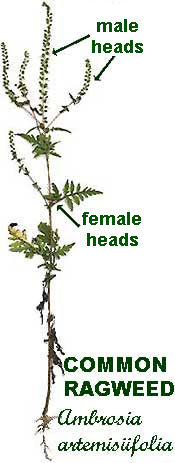
At the right you see a Common Ragweed, Ambrosia artemisiifolia, a knee-high annual often abundant in disturbed, weedy areas. The species is native to the Americas but invading parts of Europe and elsewhere. Over 40 species of ragweed, genus Ambrosia, are recognized, all native to the Americas.
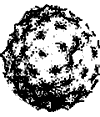
Ragweeds are famous for their pollen causing sneezing fits, clogged sinuses and runny noses for folks with hay fever. That's a ragweed pollen grain at the left. These grains are small -- 40 grains laid end to end would span about one millimeter, or 1/25ths of an inch. A single ragweed plant can produce a billion airborne pollen grains during an average season. Ragweeds begin producing pollen when summer days start getting shorter. Unless the plants are removed they keep producing pollen until there's frost.
Since ragweed pollen causes such misery, it's especially interesting to understand its flowers. However, ragweeds are members of the huge Composite or Aster Family, so their blossoms are very unlike those of most flowers, as described on our Standard Blossom page. Our special page on Composite Flowers outlines basic composite-flower structure.
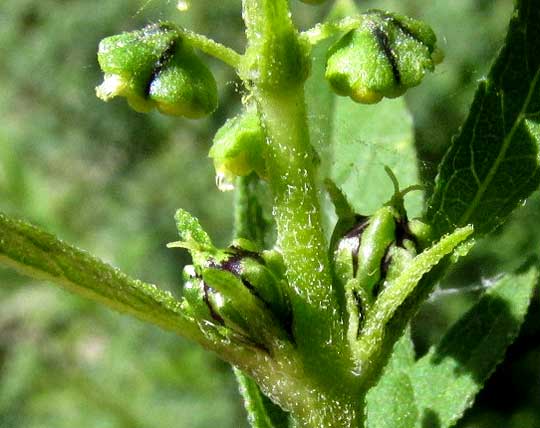
The above photo of a Common Ragweed shows how male flowering heads are distributed toward the top of the plant, while female ones very inconspicuously appear at upper leaf bases. The photo at the left, of part of a Giant Ragweed, Ambrosia trifida, shows male and female flowering heads at the bottom of the male section, where female heads lower down first appear. In the picture, pollen-producing male heads looking like upside-down bowls are at the top, female heads at the bottom. Atop the female parts, note two slender "style branches" atop blackish, oval ovaries.
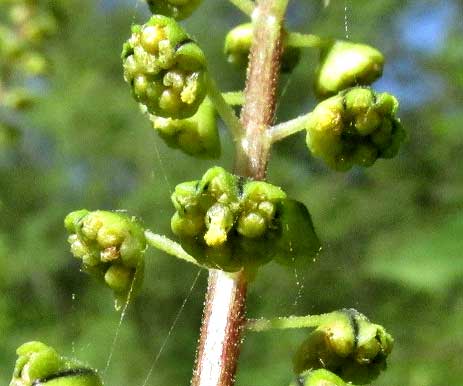
At the right is a closer look at the Giant Ragweed's male flowering heads. Note that here we mention flowering heads, but not flowers. That's because in the Composite Family the items analogous to regular flowers are much reduced, and called florets. In the picture, several florets are crammed into each head. Each male floret usually consistes of five stamens, and pollen falls from the stamens' anthers. In the picture, a few florets are beginning to open, with yellow pollen grains appearing.
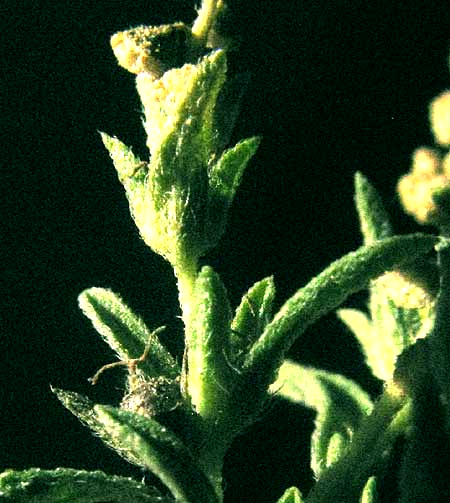
At the left is another look at female florets, on the Common Ragweed. Once again the blackish, oval ovaries, at the picture's bottom, are topped by slender style branches. The style branches bear microscopic "stigmatic papillae," on which pollen grains germinate. The ovary will mature into a one-seeded, cypsela-type fruit, or "bur."
Ragweed fruits are important food for many animals. They are favorite foods of Goldfinches, Juncos, Redwing Blackbirds, Bobwhites, Redpolls, White-crowned and White-throated Sparrows. Also they're often eaten by mammals such as Thirteen-lined Ground Squirrels and Least Chipmunks.